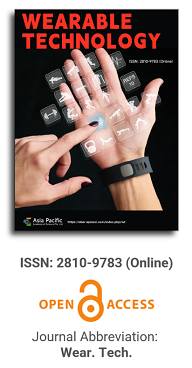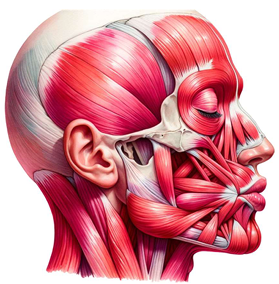

This paper delves deeply into the innovative realm of integrating human emotions with wearable technology. The primary focus is on the conceptualization and development of a kiss transfer device that harnesses the power of wearable technology to bridge the physical gap in human-human interactions. By investigating the intricate nuances of the human-human kissing process, the research seeks to replicate this intimate gesture through a technological medium. The paper not only elaborates on the anatomy, evolution, and hormonal dynamics of kissing but also underscores the transformative potential of wearable technology in capturing and transmitting these intimate moments. This exploration opens up new horizons for long-distance relationships, offering a tangible touchpoint that goes beyond traditional communication methods. Through this pioneering work, the research positions wearable technology as not just a tool for communication but as an extension of our human emotions and expressions.

Research progress of electrode coating for cochlear implant
Vol 3, Issue 2, 2022
Download PDF
Abstract
111
Keywords
References
- Mohammad S, Lucas MV, Joseph B, et al. Within-subject comparison of word recognition and spiral ganglion cell count in bilateral cochlear implant recipients. Otol Neurotol 2014; 35(8): 1446–1450.
- O’Leary SJ, Richardson RR, McDermott HJ. Princi-ples of design and biological approaches for im-proving the selectivity of cochlear implant elec-trodes. J Neural Eng 2009; 6(5): 055002.
- Anandhan D, Claude J. An overview of cochlear implant electrode array designs. Hear Res 2017; 356: 93–103.
- Esperanza B, Christine TD, Carolyn G, et al. Con-servation of hearing and protection of hair cells in cochlear implant patients’ with residual hearing. Anat Rec (Hoboken) 2012; 295(11): 1909–1927.
- Esperanza B, Stefania G, Michelle A, et al. Spiral ganglion cells and macrophages initiate neu-ro-inflammation and scarring following cochlear implantation. Front Cell Neurosci 2015; 12(9): 303.
- Somdas MA, Li PM, Whiten DM, et al. Quantitative evaluation of new bone and fibrous tissue in the cochlea following cochlear implantation in the human. Audiol Neurootol 2007; 12(5): 277–284.
- Liu J, Yang S. Development of cochlear implantation and its related technique. Chin J Otorhinolaryngol Skull Base Surg 2018; 5(10): 449–455.
- Wang M, Wang X, Zhong C. Research Advances in convergence of cochlear implantation with human induced pluripotent stem cell transplantation in treatment of sensorineural hearing loss. Chinese Journal of Otology 2020; 18(05): 972–976.
- Xu M, Zhang H. Research progress in cochlear electrode drug delivery. Chinese Journal of Otology 2018; 16(4): 570–574.
- Verena S, Andrea H, Michael M, et al. Stem cell based drug delivery for protection of auditory neurons in a guinea pig model of cochlear implantation. Front Cell Neurosci 2019; 14(13): 177.
- Jana S, Anika H, Michael M, et al. Alginateencap-sulated brain-derived neurotrophic factor—Overexpressing mesenchymal stem cells are a promising drug delivery system for protection of auditory neurons. J Tissue Eng 2020; 11: 115.
- Silke H, Verena S, Michael M, et al. Coating stability and insertion forces of an alginate-cell-based drug delivery implant system for the inner ear. J Mech Behav Biomed Mater 2019; 97: 90–98.
- Alessandra G, Liu Y, Riitta M, et al. Design and testing of a bending-resistant transparent nano-coating for optoacoustic cochlear implants. Chem-istryOpen 2019; 8(8): 1100–1108.
- Li H, Fredrik E, Hisamitsu H, et al. Guided growth of auditory neurons: Bioactive particles towards gap-less neural e electrode interface. Biomaterials 2017; 122: 1–9.
- Antonina W, Barbara D, Daniel H, et al. Dexame-thasone released from cochlear implant coatings combined with a protein repellent hydrogel layer inhibits fibroblast proliferation. J Biomed Mater Res A 2014; 102(2): 442–454.
- Antonina W, Melanie S, Sven B, et al. Hydrogel coated and dexamethasone releasing cochlear im-plants: quantification of fibrosis in guinea pigs and evaluation of insertion forces in a human cochlea model. J Biomed Mater Res B Appl Biomater 2015; 103(1): 169–178.
- Stefan KP, Alec NS. Local drug delivery to the inner ear: Principles, practice, and future challenges. Hear Res 2018; 368: 1–2.
- Ceschi P, Bohl A, Sternberg K, et al. Biodegradable polymeric coatings on cochlear implant surfaces and their influence on spiral ganglion cell survival. J Biomed Mater Res B Appl Biomater 2014; 102(6): 1255–1267.
- Anne B, Henning WR, Piera C, et al. Development of a specially tailored local drug delivery system for the prevention of fibrosis after insertion of cochlear implants into the inner ear. J Mater Sci Mater Med 2012; 23(9): 2151–2162.
- Yu H, Tan H, Huang Y, et al. Development of a rap-idly made, easily personalized drug-eluting polymer film on the electrode array of a cochlear implant during surgery. Biochem Biophys Res Commun 2020; 526(2): 328–333.
- Yayoi SK, Takayuki N, Lin Y, et al. Growth fac-tor-eluting cochlear implant electrode: impact on residual auditory function, insertional trauma, and fibrosis. J Transl Med 2014; 12: 280.
- Duan Y, Clark GM, Cowan RS. A study of in-tra-cochlear electrodes and tissue interface by elec-trochemical impedance methods in vivo. Bio-materials 2004; 25(17): 3813–3828.
- Wallace GG, Kane-Maguire LAP. Manipulating and monitoring biomolecular interactions with con-ducting electroactive polymers. Adv Mater 2002; 14: 953–960.
- Jennifer AC, Jeffrey LH, Sarah MR, et al. The use of a dual PEDOT and RGD-functionalized alginate hy-drogel coating to provide sustained drug delivery and improved cochlear implant function. Bio-materials 2012; 33(7): 1982–1990.
- Rachelle TH, Wolfram FD, Claudia T, et al. Im-proving cochlear implant properties through con-ductive hydrogel coatings. IEEE Trans Neural Syst Rehabil Eng 2014; 22(2): 411–418.
- Curtis DL, Eric MH, John JW, et al. Low-impedance, high surface area Pt-Ir electrodeposited on cochlear implant electrodes. Journal of The Electrochemical Society 2018; 165(12): G3015–G3017.
- Ashley ND, Mario H, Bryony AN, et al. Electro-chemical and biological characterization of thin-film platinum-iridium alloy electrode coatings: a chronic in vivo study. Journal of Neural Engi-neering 2020; 17(3): 036012.
- Ashley ND, Mario H, Ulises AR, et al. Electro-chemical and mechanical performance of reduced graphene oxide, conductive hydrogel, and electro-deposited Pt-Ir coated electrodes: An active in vitro study. Journal of Neural Engineering 2019; 17(1): 016015.
- Liu Z, Zhang T. Research progress of polydopamine modified polymers in nerve repair. China Biotech-nology 2020; 40(10): 57–64.
- Philipp S, Kristen R, Katrin R, et al. A polydopamine peptide coating enables adipose-derived stem cell growth on the silicone surface of cochlear implant electrode arrays. J Biomed Mater Res B Appl Bio-mater 2018; 106(4): 1431–1438.
- Hadler C, Aliuos P, Brandes G, et al. Polymer coat-ings of cochlear implant electrode surface—An op-tion for improving elec-trode-nerve-interface by blocking fibroblast over-growth. PLoS One 2016; 11(7): e0157710.
- Iwasaki Y, Ishihara K. Cell membrane-inspired phospholipid polymers for developing medical de-vices with excellent biointerfaces. Sci Technol Adv Mater 2012; 13: 064101 (14pp).
- Makoto K, Yayoi SK, Takashi S, et al. Safety, relia-bility, and operability of cochlear implant electrode arrays coated with biocompatible polymer. Acta Otolaryngol 2015; 135(4): 320–327.
Supporting Agencies
Copyright (c) 2022 Zhiyi Wang, Yong Fu

This work is licensed under a Creative Commons Attribution 4.0 International License.

Prof. Zhen Cao
College of Information Science & Electronic Engineering, Zhejiang University
China, China
Processing Speed
-
-
-
- <5 days from submission to initial review decision;
- 62% acceptance rate
-
-
Asia Pacific Academy of Science Pte. Ltd. (APACSCI) specializes in international journal publishing. APACSCI adopts the open access publishing model and provides an important communication bridge for academic groups whose interest fields include engineering, technology, medicine, computer, mathematics, agriculture and forestry, and environment.





